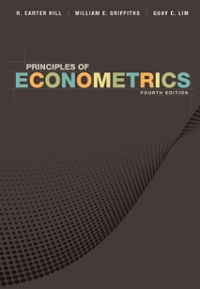Question
Suppose preferences are characterized by the utility function U(X1,X2) = X1X2 2 . As usual, the budget constraint is P1X1 + P2X2 = m. To
Suppose preferences are characterized by the utility function U(X1,X2) = X1X2 2 . As usual, the budget constraint is P1X1 + P2X2 = m. To be concrete, suppose P1 = P2 = 10 and m = $90. a. Find the marginal rate of substitution of X1 for X2 and interpret whether it is increasing, decreasing or constant. b. Determine the X1 and X2 combination which maximizes John`s utility, given his budget constraint. Show his optimum point on graph. c. Now suppose the government places a 50% tax on X1. Write the new budget constraint, given this tax. Identify the utility maximizing bundle of X1 and X2 for John. What would happen to his utility as a result of the price increase? Also, show his new optimum point on graph.
Step by Step Solution
There are 3 Steps involved in it
Step: 1

Get Instant Access to Expert-Tailored Solutions
See step-by-step solutions with expert insights and AI powered tools for academic success
Step: 2

Step: 3

Ace Your Homework with AI
Get the answers you need in no time with our AI-driven, step-by-step assistance
Get Started


